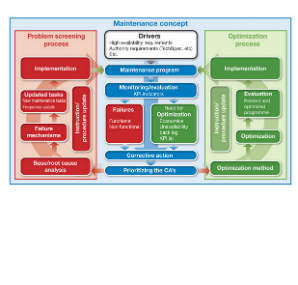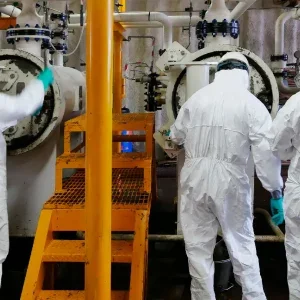
Over the last couple of decades many countries have introduced electricity market liberalization (deregulation) and privatization, thereby emphasizing competition and placing pressure on utilities to reduce the running costs of their generating assets. As the worldwide nuclear fleet continues to age and envisaged reactor lifespans get longer, more efficient maintenance regimes are a must to keep costs under control and plant availability high.
This article is a brief summary of some of the findings of the task force reviewing IAEA TECDOC 1383 – Guidance for Optimizing Nuclear Power Plant Maintenance Programmes. The new document aims to update the old guidance and capitalize on the experience gained from the maintenance optimization programmes which have been carried out to date. The IAEA team of maintenance experts is being supported by the Electric Power Research Institute and the World Nuclear Association’s Capacity Optimization Working Group.
When equipment fails to function or causes system or plant outages, one of the first impulses for corrective action is to increase the number of predefined maintenance tasks and increase the frequency of the tasks that have already been established. However, many of these actions may lead to more failures (for example through increased probability of post-maintenance defects) and decrease overall plant reliability. Such actions may not address underlying causes or ultimately lead to improved safety.
By contrast, introducing a systematic approach to establishing what maintenance tasks are to be performed on which systems, structures, or components and at what frequency, can result in improved plant reliability via prioritization of critical component systems, improved overall plant availability, improved equipment reliability and reduced costs.
The approach should seek to make the best use of condition-based maintenance where unnecessarily-costly actions and associated error-induced failures can be avoided. If probabilistic risk assessments are performed, the results can be used to help define and prioritize important systems and components.
Each operator/utility should tailor maintenance optimization to the realities of their market and regulatory environment as well as their current performance. In particular, plants in liberalized energy markets, where the price of generated electricity is not set by the state, will be seeking to improve competitiveness and maximize near-term financial returns. Plants in regulated or single- utility dominated markets may be seeking to optimize plant availability for seasonal demand and integration with other generation assets. Some plants will need to account for load following. Plants in a multi-fleet environment should ensure maximum availability and efficient usage of resources across the fleet rather than necessarily delivering a top capacity factor on a plant level. All plants will of course seek to reduce unplanned shut-downs and continuously improve safety performance.
Various methods may be used for optimizing maintenance programmes but they have common features:
- The optimum must be sought from the beginning, without waiting for years of operational experience to have accumulated
- The programme must be defined on the basis of real operating conditions which equipment suppliers seldom understand completely
- The programme must systematically identify, as a priority, all critical equipment, detailing the degree of redundancy and the effects of its possible failure on safety, production & costs
- The reasons for choosing the type and frequency of elementary tasks must be documented so that the knowledge can be transferred and the maintenance programme itself can be improved with experience
- The programme effectiveness must be checked periodically. To do that, sufficient data must be captured and readily retrievable on how equipment failures are detected, what their causes are and what corrective actions are taken.
In monitoring the overall plant condition, it is more important to have a good knowledge of individual equipment than to monitor performance indicators, which tend to be lagging, rather than leading.
Equipment evaluation and monitoring help incorporate trend information, such as that originating from system performance, component performance monitoring and predictive maintenance, as well as operations rounds monitoring and testing and inspection results. This data is used to identify systems that are performing poorly and can be used to recover system health. Determining the cause of problems and creating an action plan to fix them is conducted within the process of corrective action and may identify a need for the maintenance optimization to be reviewed.
Authors
By Mike Baron, Global Nuclear Associates; Wolfgang Denk & Alexander Puhrer, Alpiq; Jiri Mandula, IAEA; David Hess, WNA. An IAEA Technical Meeting to further this work will be held 8-10 Sept. in London at no cost to IAEA invitees and WNA member experts. Hosted by WNA, it takes place just prior to its 2014 Symposium, for which preferential rates are available. Email: hess@world-nuclear.org






